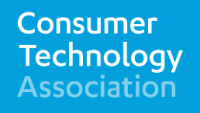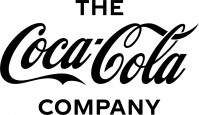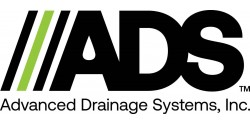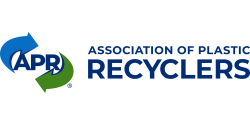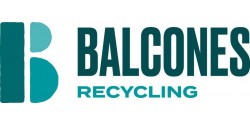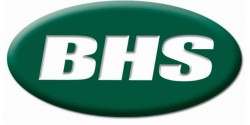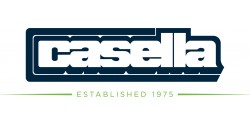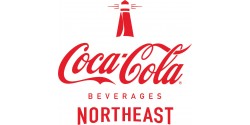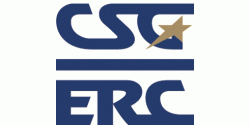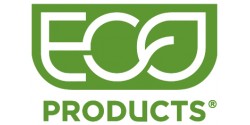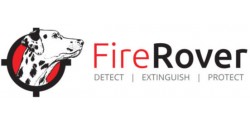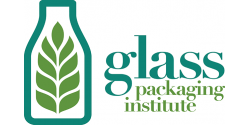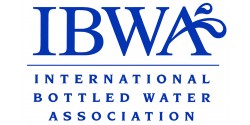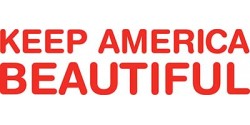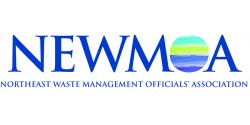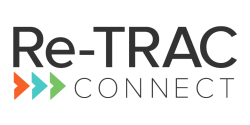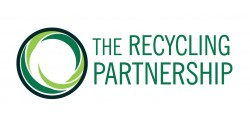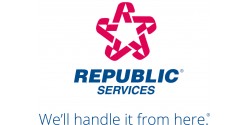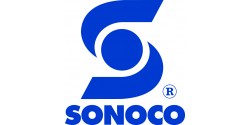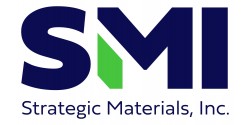March 2015
MEMBERSHIP
New Sustaining Member
NERC NEWS
- March 7th - Deadline for NERC Conference Early Registration Rate - Don't Miss it!
- NERC Reaches Across Borders for Spring Conference
- Support Is Just A Click Away
- New Advisory Membership Levels and Benefits
- Webinar Hosted by NERC on Sustainable Supply Chains
- Blog Worth Repeating - Resource Recycling, BioCycle Magazines Refute New York Times Incineration Story
TOXIC IN PACKAGING CLEARINGHOUSE NEWS
STATE UPDATES
NEW YORK
ADVISORY MEMBER UPDATES
- Opportunity for 2015 Funding - We Are On a Roll - New RFP released
- Casella Resource Solutions 2014 Sustainability Report Now Available
- Director of the Golisano Institute for Sustainability Named to UN Resources Panel
- Golisano Institute Helps to Green Up Supply Chains
- 80 Organizations with $100 Billion in Purchasing Power to Pilot New Sustainable Purchasing Program
- UNTHA Movie Offers Inside Tour
MEMBERSHIPWe are delighted to welcome our newest Sustaining Member, swissRTec American, Inc.
To see a complete listing of NERC's Members and Supporters, as well as the benefits of membership, visit the NERC Advisory Membership web page.
The broad spectrum of interests represented by NERC's Advisory Members, Individual Supporters, and Board Members and their willingness to participate significantly contribute to the unique and important role that NERC plays in recycling in the region.
With the addition of a new Director of Advisory Member Services, we are looking forward to a new and expanded membership program.
Member Spotlight - Trex
“Beauty is more than board deep” says Trex® Company in describing its resilient and ![]() versatile decking that looks like exotic wood, but is really made from recycled plastics and scrap wood. The company’s high-performance low-maintenance decking and outdoor products not only create beautiful spaces that endure tough conditions, but also reuse material that few other companies successfully process: plastic film.
versatile decking that looks like exotic wood, but is really made from recycled plastics and scrap wood. The company’s high-performance low-maintenance decking and outdoor products not only create beautiful spaces that endure tough conditions, but also reuse material that few other companies successfully process: plastic film.
In 1996, the new idea of producing composite building materials that were weather resistant, good looking, and low maintenance created quite a buzz in the building trade. The composite material provided builders and homeowners alike an alternative to costly painting and staining of traditional lumber exposed to the elements. Since then, Trex has come a long way and now stands as the world’s largest manufacturer of wood-alternative decking and railing. The company has a robust foundation of recycling and is consistently working to improve its recycling efforts – in the northeast and throughout the country.
One of the successful efforts is the company’s involvement with the Northeast Recycling Council (NERC). “Trex has definitely benefited from its relationship with NERC,” commented Samara Norman, Senior Materials Buyer for Trex. “We’ve had the opportunity to help develop a conference session, as well as publish articles in the Email Bulletin. NERC also offers Trex the opportunity to participate in regional conversations about resource management and increasing the diversion of plastic film to recycling. It’s a win-win.”
Trex has been a Sustaining Member of NERC for four years. Trex also works along with other U.S. Green Building Council members to transform the way building and communities are designed, built and operated with the goal of creating environmentally and socially responsible spaces that improve the quality of life.
Trex’s Recycling Formula
Trex eco-friendly composite decking is made from an innovative blend of 95% scrap wood and plastic film, and includes a proprietary three-sided shell that helps to protect the board. Trex invented composite decking more than 20 years ago, well before green was a buzzword. The company was built on eco-friendly principles and successfully integrates recyclable materials into high-performance products that last for decades.
So where does the plastic come from? The average 500-square foot composite Trex deck 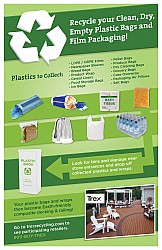 contains the equivalent of 140,000 recycled plastic bags! That makes the company one of the largest consumer film recyclers in the U.S. But it’s not just plastic bags that make up Trex decks. The recycling programs that Trex has in place encourage consumers to drop off plastic film of all kinds – from case overwraps to newspaper sleeves and sandwich bags.
contains the equivalent of 140,000 recycled plastic bags! That makes the company one of the largest consumer film recyclers in the U.S. But it’s not just plastic bags that make up Trex decks. The recycling programs that Trex has in place encourage consumers to drop off plastic film of all kinds – from case overwraps to newspaper sleeves and sandwich bags.
Trex is proud to sponsor local recycling programs in universities and communities throughout the country. Teams are challenged to collect more than 500 pounds of plastic film (about 40,500 plastic bags) in a six-month period and turn them over to Trex. In exchange, the company will donate a high-performance Trex composite bench to the school or community.
From Film to the Family Yard
After all of the materials are recycled, Trex manufacturing steps in. First, plastic film and scrap sawdust are purchased or gathered from recycling programs all over the U.S. Second, plastic film is ground into granules. The plastic film and sawdust are then combined and heated and mixed to a soft pliable consistency. This mixture is then formed into dimensional lumber sizes including tongue-and-groove pieces of varying lengths and thickness. The boards are then cooled and cut to standard construction dimensions. The boards are inspected for strength, color, and defects. Then they are packaged and sent to retailers and distributors for sale.
As one of the largest plastic film recyclers in the U.S., Trex saves more than 400 million pounds of plastic film and scrap wood from landfills each year. So the next time you are visiting a friend’s house for a barbecue, the deck you are standing on might look like wood, but it could have had a previous life as a piece of plastic!
nerc news
March 7th – Deadline for NERC Conference Early Registration Rate – Don’t Miss it!
The Conference will delve into the topics of product stewardship and extended producer responsibility and their impact on recycling, as well as emerging strategies; the impacts of single stream recycling; and dirty MRFs – are they a viable option?
When: April 7th – 8th
Where: Chase Center on the Riverfront in Wilmington, Delaware
Conference Partner
Platinum Sponsor
Gold Sponsors
Silver Sponsors
Contact Mary Ann Remolador, NERC’s Assistant Director and Conference Organizer, if you have any questions about the Conference, exhibiting, or sponsorships.
NERC Reaches Across Borders for Spring Conference
We all know that recyclables move across state borders every day. Our daily work in recycling though is regularly defined by state or regional boundaries and keeps us focused on the issues directly in front of us. This oftentimes doesn’t give us the chance to find out what our colleagues in other states and regions are thinking or doing. When planning for its Spring Conference—Own the Future - Creative Options to Sustainable Materials Management— and considering the topics to be discussed at the event (product stewardship, single stream collections, and dirty MRFs), it was obvious to NERC that we need to be talking with audiences outside of our usual boundaries. We believe this will allow us to hear the perspectives of our colleagues from more states and beyond our region and will enable us to move recycling towards sustainable materials management.
NERC is delighted to announce that we are working collaboratively with the following organizations to spread the word about NERC’s Conference on April 7th – 8th in Wilmington, Delaware.
For more information about the Conference, contact Mary Ann Remolador, NERC’s Assistant Director & Conference Organizer.
Support Is Just A Click Away
You may notice a new addition to the NERC website: a Support NERC Now button.
NERC is a 501(c)(3) non-profit organization. Your contribution will help sustain our programs and projects. When you click you will be taken to a form to fill in. You can use one of the suggested level amounts, or give what you feel would really make a commitment to the advancement of an environmentally sustainable economy. VISA and MasterCard are accepted online. Your contribution is tax deductible to the extent allowable by law. Thanks in advance for choosing to support NERC with your gift.
New Advisory Membership Levels and Benefits
As of February 3rd, NERC has made some adjustments to our Advisory Member program. This restructuring does not affect any current Advisory Members. We are grateful for their support and participation; for those entities, the dues remain the same, but they too enjoy increased benefits. Current Advisory Members are invited to consider raising their level of Membership if they desire.
A new Membership level called Distinguished Benefactor is offered at $10,000 annual dues. Added benefits for these Members include:
- Receipt of the NERC Crystal Sustainability Award.
- A link on the NERC website to your organization or company’s video either on your site or on YouTube.
- Gold Sponsorship of a panel at one of NERC’s conferences.
- Discounted registration fees for 2 individuals.
The Benefactor level at $5,000 carries recognition at a NERC conference of your commitment to sustainability and to NERC with an engraved plaque, which is a new recognition for this important Advisory Member level.
Sustaining Membership is now offered at $2,000 annually. This change in dues comes at a time when NERC is trying to expand our base of support through Membership. This increase will mean significant revenue for NERC over the long run. As stated above, those Sustaining Members who have been loyal supporters will not see their dues increase, unless they elect to.
The most significant changes in Advisory Membership are in the Supporting Member category. Trade association dues will remain at $1,500 annually, but we have clarified different dues levels based on the size of a business or type of organization.
Dues for:
- Large Businesses with annual revenues of over $100 million: $1,500
- Medium Businesses with annual revenues under $100 million: $1,000
- Small Businesses with annual revenues of $1 million: $500
- Municipalities are $350
- Non-profits, non-NERC states, Northeast provinces, U.S. Territories: $350
Though our levels of membership have changed, we are committed to expanding our network of Advisory Members while serving our current members in the best way possible. Please review all the benefits Advisory Members receive in the Advisory Member Section of nerc.org
Webinar Hosted by NERC on Sustainable Supply Chains
On February 19th, NERC hosted a webinar for the Golisano Institute, a NERC Advisory Member, about on-line resources for businesses that can make their supply chains less costly and more sustainable—the Sustainable Supply Chain Information Hub. The Hub was developed by the NYS Pollution Prevention Institute (NYSP2I), and is a central location for gaining information about supply chain sustainability and how to find assistance to implement different strategies. The webinar presenter, Patricia Donohue, is the Sustainable Supply Chain Program Manager and a Senior Engineer at the NYSP2I at the Rochester Institute of Technology (RIT). RIT is part of the Golisano Institute.
The webinar presentation is available on the RIT website and the webinar recording will be available on the same website in the near future.
NERC will also be hosting two more webinars with the Golisano Institute this spring—one on organics management and the other on purchasing green toner cartridges.
For more information about the webinars, contact Mary Ann Remolador, NERC’s Assistant Director.
Blog Worth Repeating - Resource Recycling, BioCycle Magazines Refute New York Times Incineration Story
NERC’s Blog Worth Repeating is a Guest Blog courtesy of Nora Goldstein, Editor, BioCycle and Dylan DeThomas, Editorial Director, Resource Recycling.
“January 20, 2015: The National section in the New York Times on Sunday, January 11, 2015 included an article, “Garbage Incinerators Make Comeback, Kindling Both Garbage and Debate.” The article discussed a recently constructed 3,000 tons/day incinerator in Palm Beach County, Florida, and a proposed, $1 billion, 4,000 tons/day incinerator in Baltimore, Maryland. Early in the article, New York Times reporter Timothy Williams writes: “Americans produce 4.4 pounds of trash per person per day, the most in the world, and the talk of returning to incineration, industry experts say, is an acknowledgement of defeat in the effort to reduce output and step up recycling.”
Ted Michaels, president of the Energy Recovery Council, is quoted as saying, “People said 30 years ago there wouldn’t be a need to have waste-to-energy sites,” after which Williams writes: “Today, few other options are available.”
In response to this article, the two leading industry publications in the recycling and composting industries, Resource Recycling and BioCycle, are issuing this joint statement, as the article paints an incomplete picture of the state of municipal solid waste (MSW) management in the U.S. in 2015. Excerpts from Williams’ article are followed by facts and figures that tell a more complete story of MSW management.
’With landfills shunned, recycling programs stalled and the country’s recordsetting trash output unyielding, new waste-to-energy plants are being eyed as a path to salvation.’
Shunned Landfills: Landfills may be “shunned” in terms of being desirable neighbors, but as an MSW management tool, there is more than enough capacity available for the trash being generated in most states and/or their regions, including Florida and Maryland. For example, BioCycle’s 2010 State of Garbage In America report found that Florida’s neighboring state of Georgia had 572 million cubic yards (228 million tons) of remaining capacity, whereas Maryland’s neighboring states of Pennsylvania and Virginia had a combined landfill capacity of 514 million cubic yards remaining (over 220,000 million tons). Citing landfills as being “shunned” as a reason that WTE is a path to salvation is misleading. And hauling trash long distance to out-of-state landfills via trains and trucks is a widely used waste management practice.
Stagnating Recycling: Recycling levels in many municipalities may have “stagnated,” but the necessity to recycle paper, metal, glass, plastics and other commodities is critical with increasing stress on natural resources. In 2009, The World Economic Forum released a report, “The Business Case For Sustainability,” which stated that in order to continue manufacturing consumer products for the world’s rapidly growing middle class, recovery of recyclable materials must increase significantly. The problem with locking a municipality’s unsorted MSW into a $1 billion incinerator is that those valuable commodities are going up in smoke. There is a short-term gain in power production, and a long-term loss in renewable resources.
“WTE as path to salvation”: A more thorough investigation by Williams would have uncovered that very few in the MSW industry — both the public and private sectors — view WTE as a path to salvation. Financing an incinerator requires “locking up” the MSW stream for 20 or more years, pretty much eliminating any opportunity to increase recycling or composting. In short, all collected MSW must be burned to pay the bill. And revenues from selling the electricity produced will likely not contribute significantly to the return on investment.
’Other residents say they are eager for the plant to be built, in part because Energy Answers has pledged to create jobs …’
Incinerators Plants Not Significant Job Generators: Pay Dirt, a study conducted by the Institute for Local Self-Reliance, compared job creation based on composting one million tons of organic wastes (residential, commercial, institutional) versus incinerating or landfilling the equivalent tonnage. Here is the scorecard (total number of jobs): Burning—120; Landfilling—220; Composting—740; Compost Use—620; Total Composting—1,360.
According to the annual Institute for Scrap Recycling Industries handbook, the recycling industry supports almost 463,000 jobs nationwide, generating more than $87 billion in economic activity.
Numerous reports find that recycling creates and supports, by an order of magnitude of 10-to-20, more jobs than incineration. The recent More Jobs, Less Pollution prepared by the Tellus Institute, found that of the 666,000 jobs created by MSW management overall, recycling and composting make up 86 percent of those and landfilling and incineration combined make up just 14 percent.
’The plant [in Baltimore] will be … able to combust 4,000 tons of material per day processed from residential garbage, wood, tires and the remains of automobiles.’
Burning Up Edible Food: The U.S. Environmental Protection Agency’s most recent MSW Facts & Figures data reports that 21.1% of the MSW generated in the U.S. is food waste. Using the 4,000 tons/day number for Baltimore, that is roughly 800 tons/day of food waste that would be combusted. Based on observations from one city’s commercial food scraps composting program (see “Food Recovery In San Diego,” BioCycle, March 2013) it was roughly estimated that 15% of food waste thrown away is still edible. Based on that estimate, about 120 tons/day of what is proposed to be burned in Baltimore could be rescued. Using a U.S. Department of Agriculture conversion of 1.2 lbs of food/meal, that is equivalent to roughly 200,000 meals/day that would be burned instead of consumed. The nonedible portion of the food waste can be composted and/or anaerobically digested, with the by-products used to generate renewable electricity and soil amendments (to grow more food).”
NERC welcomes Guest Blog submissions. To inquire about submitting articles contact Athena Lee Bradley, Projects Manager. Disclaimer: Guest blogs represent the opinion of the writers and may not reflect the policy or position of the Northeast Recycling Council, Inc.
TOXICS IN PACKAGING CLEARINGHOUSE NEWsTPCH Launches Redesigned Website
The Toxics in Packaging Clearinghouse (TPCH) launched its newly designed website in mid-February. Check out the TPCH’s fresh, new look! The website is now  easier to navigate and incorporates graphics for visual appeal. For the first time, users can also sign up for periodic email updates from TPCH with just one click.
easier to navigate and incorporates graphics for visual appeal. For the first time, users can also sign up for periodic email updates from TPCH with just one click.
The website redesign was part of a two-step refresh process for TPCH. The organization unveiled its new logo (above) a few months ago.
STATE UPDATES
NEW YORK
1st Annual NYS Summit on Organics Management
Community-Based Composting: Lessons Learned Across New York State
9:30am to 4:00pm - March 5, 2015
3399 North Road, Cornell Boathouse - Marist College, Poughkeepsie NY
This summit was created by NYSAR3's Organics Council with the purpose to connect small-medium scale composters throughout NYS and to develop a working group that will continue to support existing community composting as well as encourage new programs throughout the state. Short presentations will kick off the sessions and will help to focus discussions on starting, evolving, and maintaining community-based composting programs (from single sites to multiple sites within a city/region) and developing best management practices. Bring your questions and experiences to share.
Help spread the word! Forward this e-mail and link to your Facebook and Twitter #OrganicsSummitNY.
ADVISORY MEMBER UPDATES
Opportunity for 2015 Funding - We Are On a Roll - New RFP released
The Recycling Partnership, an initiative of Curbside Value Partnership (CVP), is pleased to announce their 2015 funding opportunity for counties, municipalities and solid waste authorities seeking to improve their residential curbside recycling infrastructure. Specifically, the grants will provide funding for cart procurement and education and outreach programs. CVP will also provide successful applicants with tailored recycling education campaign materials to support the cart rollout, along with technical assistance for community recycling operations.
Casella Resource Solutions 2014 Sustainability Report Now Available
Casella Resource Solutions has published its 2014 Sustainability Report, which is available for download at this link: http://bit.ly/casellasustain2014.
Casella’s mission is “to create value for our customers, communities, and our company by transforming waste into resources.” The company does this by delivering recycling, collection, organics, energy, and landfill services to customers throughout the northeastern U.S.
Highlights of the report include:
- In 2013, Casella helped its customers divert over 500,000 tons of recyclables and over 400,000 tons of organics. The company recently built its 6th Zero-Sort recycling facility (in Lewiston, ME) and is actively investing in infrastructure for food scraps recycling.
- Together with its partners, Casella helped to produce over 227,000 MWH of electricity in 2013, enough for over 30,000 New England homes. The company advances local and renewable energy goals through landfill gas to energy, anaerobic digestion, heat recovery, and solar projects.
- Since 2005, Casella has reduced its company-wide greenhouse gas emissions by over 50% by investing in improvements to its landfills, facilities, and fleet. The company intends to continue this trend in coming years, while also helping customers to improve their footprints.
Casella hopes that this report will spark thoughtful conversations about sustainable resource management in our region. We look forward to receiving any and all feedback. Please email Abbie Webb, Sustainability Manager at abbie.webb@casella.com.
Director of the Golisano Institute for Sustainability Named to UN Resources Panel
Dr. Nabil Nasr, associate provost and director of the Golisano Institute for Sustainability (GIS), has been named a member of the United Nations Environmental Program’s International Resource Panel, comprising international experts guiding the U.N. on its environmental priorities.
The United Nations Environmental Program’s (UNEP) International Resource Panel is widely considered the most authoritative scientific forum for scientists and experts working in the area of natural resource management. It was launched in 2007 to build and share knowledge toward improving the use of resources worldwide.
The panel consists of eminent scientists, highly skilled in resource management issues. Their reports help advance the panel’s goal of steering people away from over-consumption, waste and ecological harm toward a more prosperous and sustainable future.
“To be selected to serve on this panel is a tremendous honor and I am very excited to have the opportunity to work with such an outstanding panel to help inform policymakers globally in areas related to sustainable management of natural resources,” Nasr said. “For RIT, this is terrific recognition for the expanding global reputation of our world-class Golisano Institute for Sustainability.”
During a meeting in the Netherlands last month, the panel identified areas for future research: the “circular economy” (remanufacturing); ecosystem resilience and restoration; the governance of natural resources and poverty eradication, and marine resources.
Dr. Nasr is leading the panel’s discussions and proposals surrounding remanufacturing and the circular economy, a generic term for an industrial economy that is designed to becoming more restorative in its relationship with the environment.
Golisano Institute Helps to Green Up Supply Chains
Increasingly, corporations and other organizations are under pressure from their key stakeholders to demonstrate that the business operations of companies in their supply chains are sustainable. Widespread outsourcing of manufacturing, for example, has led to the outsourcing of carbon emissions as well. An organization that declines to report its Scope 3 emissions—those from indirect sources such as supply chains—would be providing a measure of its carbon footprint that is at best inaccurate.
While large organizations can muster the resources to produce sustainability reports according to standards such as those created by the Global Reporting Initiative—to name but one of the reporting standards prevalent today—the far smaller companies most often found in supply chains often face severe challenges in the time and expense required to create a meaningful sustainability report. Yet supply chain companies face more and more pressure from downstream organizations to demonstrate their sustainability.
The Sustainable Supply Chain Program of the New York State Pollution Prevention Institute (NYSP2I), a research and technology transfer center headquartered at the Golisano Institute in Rochester, New York, has developed a baseline questionnaire that the center’s staff can use to help suppliers “become preferred business partners to other organizations.”
“Organizations that strategize, set targets, measure, monitor, and report their sustainability efforts will likely generate more revenue, retain and potentially create jobs, and reduce the risk of jeopardizing potential business,” the Sustainable Supply Chain Baseline Assessment Tool states.
In keeping with the famous quote from the late Peter Drucker—“What gets measured gets managed”—central to the Assessment Tool is a series of questions addressing inputs such as natural resource and energy use, and outputs such as air emissions and wastewater. In addition to the competitive advantage gained by presenting a factual profile of their sustainability efforts, companies that work with NYSP2I staff are likely to experience reduced operational costs and environmental impacts.
The NYSP2I program provides participating companies with access to a web-based Sustainable Supply Chain Knowledge Hub, where they can learn about sustainable market opportunities and requirements. It also assists corporate purchasers in meeting sustainability goals by linking them with New York-based green suppliers.
Written by Robert Kropp, NERC’s Bookkeeper/Office Manager and freelance journalist writing on sustainability and corporate social responsibility.
80 Organizations with $100 Billion in Purchasing Power to Pilot New Sustainable Purchasing Program
Eighty organizations with more than $100 billion in purchasing power have signed up to pilot the Sustainable Purchasing Leadership Council’s Guidance for Leadership in Sustainable Purchasing v1.0, which was released to the public in February 2015.
The result of two years of work by leaders from government, industry, academia, standards organizations, and public interest groups, the Guidance is a multi-sector program designed to help organizations reduce their risks and contribute to a more sustainable future. The Guidance offers purchasers detailed advice for promoting market innovation and optimizing the environmental, social, and economic performance of their supply chains.
Some of the purchasing organizations that will be piloting the Guidance include, the US General Services Administration, US Environmental Protection Agency, California Department of General Services, Minnesota Materials Management Division, Lockheed Martin, Office Depot, the cities of Cleveland, Portland, and Santa Monica, King County, Emory University, University of California at Santa Barbara, and Portland Community College. Suppliers will also be participating in the pilot, including Asia Pulp and Paper, ASSA ABLOY, Ecolab, LittleFootprint Lighting, and TreeZero Paper. Enrollment remains open for those organizations interested in joining the Pilot Program.
“Organizations in a wide variety of sectors and regions can use this Guidance to understand the environmental, social, and economic life cycle impacts of their purchased goods and services, prioritize actions that best address these impacts, and benchmark progress toward performance goals,” says Executive Director Jason Pearson. “This Guidance is a voluntary program that will serve as the basis for a future rating system that rewards organizations who demonstrate leadership in sustainable purchasing.”
The Pilot Program is an intensive training, collaboration, and feedback period designed to engage purchasing organizations and entities affected by the Guidance, such as suppliers, standards developers, and certifiers. The Pilot runs from February through July 2015.
The Guidance is the result of two years of work by SPLC staff and stakeholders, including 90 expert volunteers from leading organizations in the government, NGO, and corporate communities who served on the Technical Advisory Committee and eight category-specific Technical Advisory Groups (TAGs).
About the Guidance: https://www.sustainablepurchasing.org/guidance
About the Pilot Program: https://www.sustainablepurchasing.org/pilot/
UNTHA Movie Offers Inside Tour
Step inside the production plant of one of the world’s leading providers of recycling technology. UNTHA shredding technology GmbH offers a behind the scenes look with its new six minute video available at www.untha.com. The new UNTHA shredding technology movie impressively showcases the entire scope of services provided by the shredding specialists from Salzburg.
The movie allows viewers to experience a modern production company and most importantly, it also answers the central questions: Who is UNTHA? What does UNTHA do? And, what is important to UNTHA? While products, services and technologies are highlighted, UNTHA employees clearly play the lead, giving the audience a chance to meet the people behind “the reliable brand.”
"UNTHA stands for uncompromising reliability in shredding technology,” explains Thomas Schmid, director of UNTHA Marketing and Public Relations. “This image is embodied not only by UNTHA's products and services, but also by every single employee as we all support this central idea. We therefore thought it important to show a strong connection to the employees and their contribution in the movie - thus giving UNTHA a face.”
The new UNTHA shredding technology company movie can be viewed on www.untha.com.


